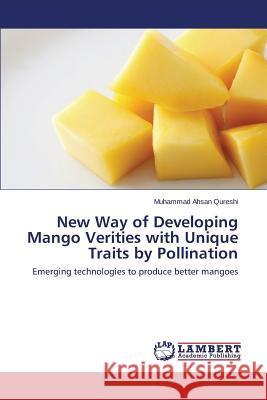New Way of Developing Mango Verities with Unique Traits by Pollination » książka
New Way of Developing Mango Verities with Unique Traits by Pollination
ISBN-13: 9783659627064 / Angielski / Miękka / 2014 / 68 str.
Mango (mangiferaindicaL.), is included in the family Anacardiaceae of Order Sapindales. It istheworld's most importanttropical fruit. It is also calledthe king of fruits (Purseglove, 1972). There are more than 1,000 different varieties of mango throughout the world (Anon. n.d).Mango is very old and originated in Southeast Asian orIndio Burma Region (Mukherjee, 1951, 196). It has been grown for thousands of years in region of India (Mukherjee, 1953; Kostermans &Bompard, 1993). Its cultivation is older asIndian civilization (DeCandolle, 1884). Mughal Emperor, Akbar, who planted Lakh Bagh, had the main contribution in its development and culture in Indian subcontinent. Many mango varieties had been named after Muslims who were experts of mango (Mukharjee and Nath, 1970). Now mango is an integral part of the history and culture of India and Pakistan
Mango (mangiferaindicaL.),is included in the family Anacardiaceae of Order Sapindales. It istheworlds most importanttropical fruit. It is also calledthe king of fruits (Purseglove, 1972). There are more than 1,000 different varieties of mango throughout the world (Anon. n.d).Mango is very old and originated in Southeast Asian orIndio Burma Region (Mukherjee, 1951, 196). It has been grown for thousands of years in region of India (Mukherjee, 1953; Kostermans &Bompard, 1993). Its cultivation is older asIndian civilization (DeCandolle, 1884). Mughal Emperor, Akbar, who planted Lakh Bagh, had the main contribution in its development and culture in Indian subcontinent. Many mango varieties had been named after Muslims who were experts of mango (Mukharjee and Nath, 1970). Now mango is an integral part of the history and culture of India and Pakistan.











